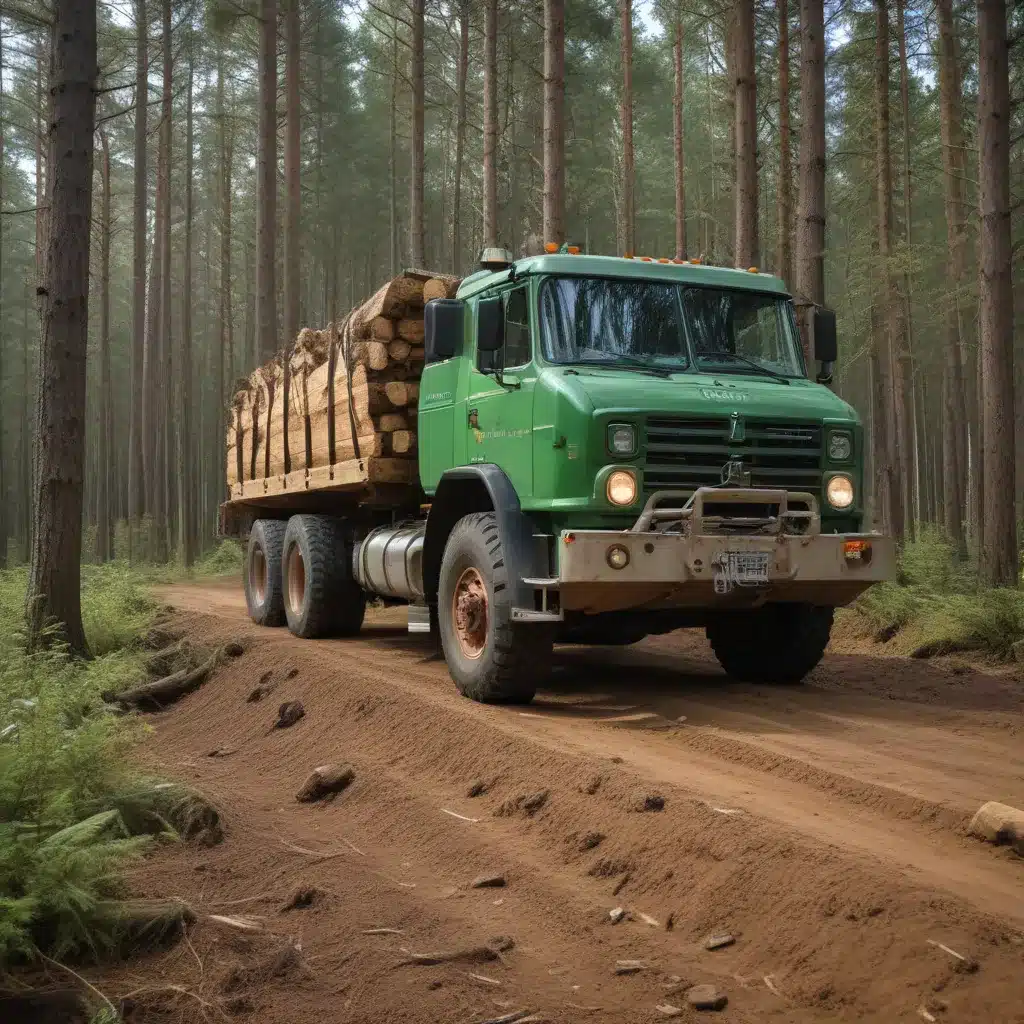Vehicle Safety Features
Now, this might seem counterintuitive when managing forest ecosystems…
Ensuring the safety and reliability of forestry transportation equipment is a crucial aspect of sustainable woodland management. In our 20 years of forestry operations and woodland management… From the rugged terrain of remote logging roads to the demanding conditions of heavy-duty haulage, forestry vehicles face unique challenges that require specialized safety features and design considerations.
Types of Safety Features
Passive Safety Features play a vital role in protecting forestry workers and equipment in the event of an accident. These include reinforced cabins, energy-absorbing structures, and advanced restraint systems that shield operators from impact forces. Equally important are Active Safety Features that assist the driver in maintaining control and avoiding incidents, such as electronic stability control, advanced braking systems, and collision avoidance technologies.
The integration of these passive and active safety elements into Integrated Safety Systems further enhances the overall protection of forestry transportation. By leveraging sensor data, predictive analytics, and automated interventions, these sophisticated systems can anticipate hazards, enhance situational awareness, and proactively intervene to mitigate risks.
Safety Standards and Regulations
Adhering to industry safety standards and government regulations is paramount for forestry contractors operating in the field. International standards, such as ISO 25119 for agricultural and forestry machinery, provide comprehensive guidelines for the design, testing, and certification of safety-critical components. Meanwhile, regional regulations, like the European Union’s ROPS and FOPS standards, mandate the inclusion of rollover and falling object protective structures on forestry equipment.
Staying informed of the latest safety requirements and ensuring full compliance is essential for forestry contractors to protect their workers and maintain operational integrity.
Forestry Transportation
Unique Challenges
The nature of forestry operations presents distinct challenges that demand specialized vehicle design and safety considerations. The rugged, uneven terrain of logging roads and forest tracks can test the limits of vehicle stability and maneuverability, while environmental factors like rain, mud, and snow can compromise traction and visibility.
The diverse configuration of forestry transportation, from heavy-duty log haulers to agile skidders and forwarders, further complicates the safety equation. Each vehicle type might want to be tailored to the specific tasks and conditions it will encounter, balancing payload capacity, mobility, and operator protection.
Vehicle Design Considerations
Ensuring the safety and stability of forestry vehicles requires a comprehensive approach to design. Stability and Handling are critical factors, with features like low centers of gravity, wide track widths, and active suspension systems helping to maintain control on uneven terrain. Equally important are Visibility and Lighting enhancements, such as panoramic cabs, LED lighting, and camera-based driver assistance systems, which enable operators to clearly navigate hazards and monitor their surroundings.
The incorporation of Protective Structures, like rollover protective structures (ROPS) and falling object protective structures (FOPS), forms a vital safeguard for forestry workers. These engineered systems can absorb the impact of rollovers, overturns, and falling debris, shielding the operator from harm.
Optimisation Strategies
Performance Evaluation
Ensuring the ongoing safety and reliability of forestry transportation equipment requires a comprehensive approach to performance evaluation and continuous improvement. Rigorous Testing and Validation procedures, including simulations, field trials, and crash testing, help manufacturers and contractors validate the effectiveness of safety features and identify areas for enhancement.
The analysis of Data and Modelling can also provide valuable insights, allowing forestry professionals to monitor operational performance, identify trends, and optimize vehicle configurations for specific applications. By leveraging the wealth of data generated by telematics systems, predictive maintenance algorithms, and operator feedback, the industry can make data-driven decisions to enhance safety and productivity.
Design Modifications
Incorporating the lessons learned from performance evaluation, forestry equipment manufacturers can implement targeted Ergonomic Enhancements to improve operator comfort, visibility, and control. The strategic Integration of Advanced Technologies, such as collision avoidance systems, intelligent load monitoring, and autonomous safety features, can further elevate the safety and efficiency of forestry transportation.
In addition, the judicious selection of Materials plays a crucial role in optimizing forestry vehicle safety. From high-strength structural components to energy-absorbing materials, the right material choices can significantly improve the protective capabilities of forestry equipment.
Environmental Impact
Sustainability Considerations
As the forestry industry embraces a more sustainable future, the environmental impact of forestry transportation equipment has become an increasingly important consideration. Emissions and Fuel Efficiency are key areas of focus, with advancements in engine technologies, alternative fuels, and electrification helping to reduce the carbon footprint of forestry operations.
The Recyclability and Reusability of forestry vehicle components also contribute to the overall sustainability of the industry. By designing for disassembly, using recyclable materials, and implementing effective end-of-life management strategies, forestry contractors can minimize waste and conserve natural resources.
Life Cycle Assessment
A comprehensive Life Cycle Assessment (LCA) approach helps forestry professionals understand the environmental impact of their transportation equipment throughout its entire life cycle, from manufacturing to disposal. By analyzing the energy consumption, emissions, and resource utilization at each stage, forestry contractors can make informed decisions to optimize the sustainability of their operations.
Integrating these LCA insights into the Design and Development of forestry vehicles ensures that environmental considerations are deeply embedded into the product lifecycle, ultimately contributing to a more sustainable future for the industry.
By continuously optimizing vehicle safety features, forestry contractors can enhance the protection of their workers, improve the reliability of their operations, and reduce the environmental impact of their transportation equipment. Through a combination of advanced safety systems, data-driven decision-making, and sustainable design principles, the forestry industry can navigate the unique challenges of transportation while upholding the highest standards of safety and environmental responsibility. For more information on sustainable forestry practices, please visit forestrycontracting.co.uk.
Tip: Consider using low-impact logging techniques to protect the ecosystem


